Paranormal creatures are all the rage these days. But you probably have had enough of all those teenage vampires involved in messy love triangles (no offense to the fans!)
If you’re on the lookout for some new level of badassery that you haven’t heard of before, or unsparkling monsters and vile beasts that are not quite mainstream yet--may we interest you in some mythical French creatures?
That’s right. We’ve got an entire squad of French-speaking creepers from French folklore right here waiting for you. But our goal at Talk in French is to spread fun and learning, and we don’t want you cowering in fear under the tables. So, to let you know if you can handle the list, we’ve marked the entries with one to three stars to give you an idea of the featured creature’s scare levels.
Scare factor: 1 star (★) -- Meh. Pretty harmless stuff. You might even want to get one as a pet… or a supernatural BFF.
Scare factor: 2 stars (★★) -- It manages to raise a few hairs, but nothing to be seriously worried about.
Scare factor: 3 stars (★★★) -- Monstrosity to the extreme! These are stuff out of your nightmares, so proceed with caution. Or heed this advice from a well-known internet sage:
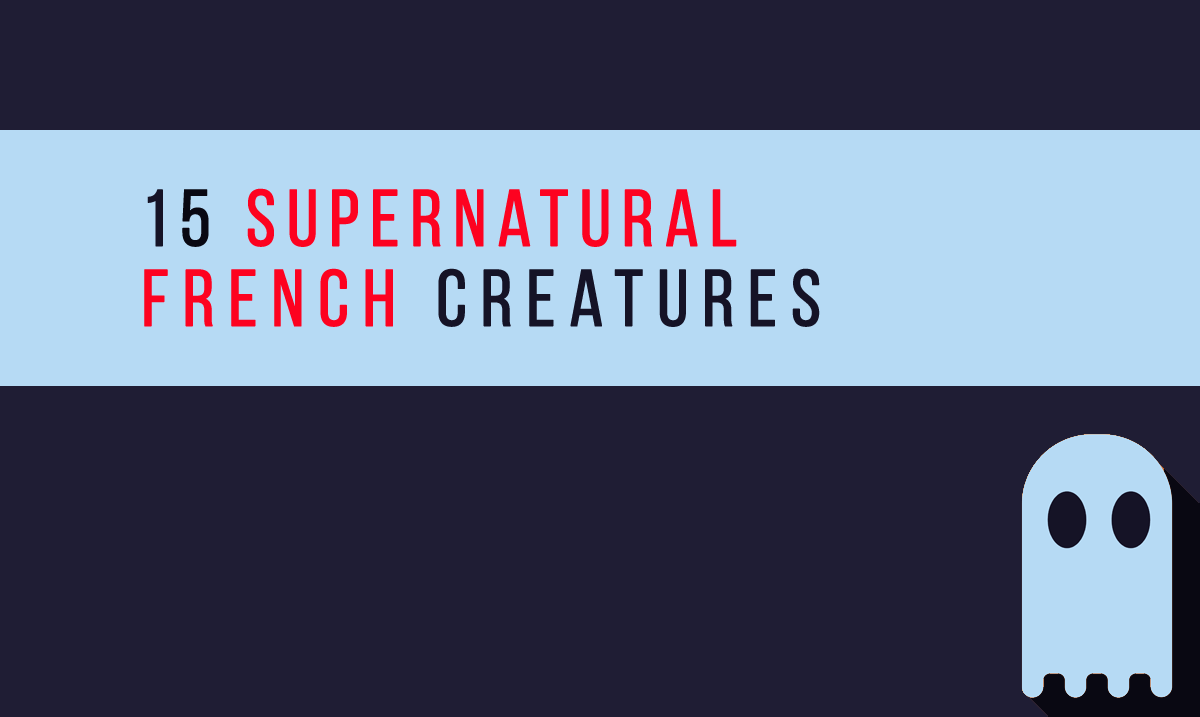
So pull on those blankets over your head and start scrolling because here come the parade of legendary French creatures from French mythology and folklore!
1. Lutin
Scare Factor: ★
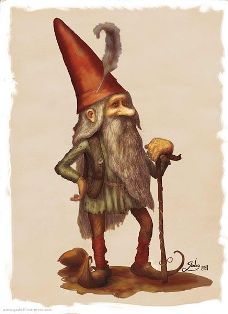
There’s bound to be a similar creature in wherever you’re from, so this is definitely not new anymore. This type of hobgoblin is also referred to in other cultures as dwarf, elf, fairy, gnome, imp, leprechaun, pixie, sprite, and many other things. But the lutin figures primarily in the folklore of Normandy and they may either be good or evil.
Just like its Anglo-saxon counterparts, lutins also play a role in Christmas, as they are the ones who assist Père Noël.
Did you know?
There is a popular French fairy tale called Le Prince Lutin about a handsome prince who turned into a lutin. It was written by Marie Catherine d'Aulnoy and published in 1697.
2. Tarasque
Scare Factor: ★★
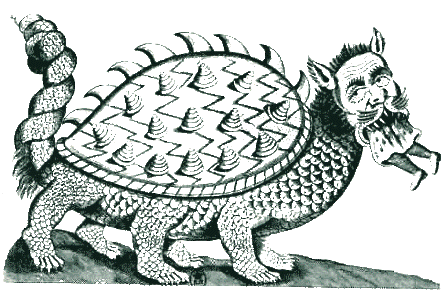
This creature of legend was said to hail from the area of Nerluc in Provence and is basically a mish-mash of creature limbs and animal spare parts. It looks like a dragon but has the head of a lion, 3 pairs of short bear-like legs, and a body like an ox which is covered with a turtle’s shell. On top of all that, it also has a scaly tale that ends with a scorpion’s tale. Each part is, of course, designed to maim---or kill, if you’re lucky enough to escape a horrific, traumatized future.
Legend says that the king of Nerluc battled the Tarasque with knights and weapons, but only Saint Martha was able to tame the beast through prayers and hymns. Despite being tamed, the townspeople still killed the creature, but later on regretted doing so after Martha preached to them about Christianity. To make up for what they’ve done, they renamed the town Tarascon, in honor of the slain beast.
Did you know?
The Tarasque appears in the popular game Final Fantasy XII as one of the Rare Game enemies.

Speak, Listen, and Write French like a Native with Talk in French Complete Courses
3. Nain Rouge
Scare Factor: ★★

The Nain Rouge or literally, the Red Dwarf, is a kind of Lutin that also hails from Normandy. Described as small and child-like with “blazing red eyes and long, rotten teeth”, this nasty little bugger is not something to be messed with. Red or black fur boots complete his get-up, but don’t let the devilish leer fool you. He’s not merely a trickster, he is also feared as a “harbinger of doom”.
The Nain Rouge is popular in Detroit, Michigan and is a mainstay in local urban legends. It is said that the Nain Rouge may be spotted prior to major catastrophic events and was seen before the Battle of Bloody Run, the fire in 1805, the War of 1812, the 12th Street Riot in 1967, and the snow storm in 1976. As of present, there is an annual costumed parade in Michigan that features burning of the Nain Rouge effigy, as a way to drive off the pesky dwarf for another year.
Did you know?
The Nain Rouge has a beer named in its honor, the Detroit Dwarf lager. There’s also a red wine called Nain Rouge Red distributed in the Detroit area.
4. Lou Carcolh
Scare Factor: ★★★
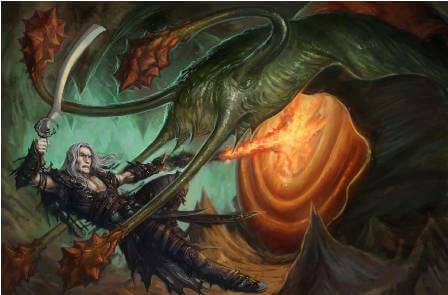
Is it a snail? Yes.
Is it a serpent? Yes.
Is it a freaky scary monster? HELL YES.
Guys, meet Lou. Not the regular, nice Lou that you know from work. This one is the scariest Lou you could ever come across. And he’s not nice.
He’s an epic snail monster with long tentacles and massive serpent-like body that mostly hides underground until he’s ready to snap at you and paralyze you with his hairy, slimy limbs. Then he eats you. With his huge gaping mouth.
And oh, by long tentacles, we meant that it can extend up to several miles and there’s really no hope of escape when you come across Lou Carcolh. So unless you’re a fighting ninja swordsman with expert monster-fighting abilities (like the one pictured above), there is nothing left for you to do but cry and say a little prayer before you officially become slime-covered snail food – swallowed whole with clothes and all.
This serpent-mollusk hybrid is said to live in the underground caverns of southwest France and carries a shell on its back, just like a normal snail. But it’s far from normal. And it’s about to take over your nightmares, so we might as well stop talking about him now.
*shudder*
5. Dames Blanches
Scare Factor: ★★
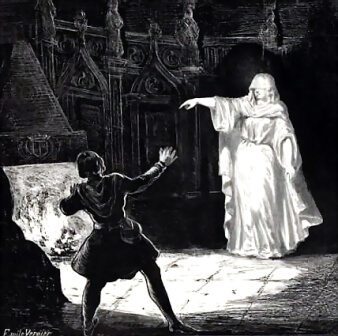
Dames Blanches literally mean “White Ladies” and there’s probably a version of this where you’re from. Some consider them ghosts while others classify them as female supernatural beings or fae folk. In France, the Dames Blanches are popular in the regions of Lorraine and Normandy and were said to appear in Occitan, the Pyrenees mountains and various other sightings.
They are said to lurk near caverns, ravines, bridges and other narrow places where they can attract the attention of people passing through. They are generally not too mean or evil, but they could still do some damage if you don’t play up to their whims and demands. Kinda like female bandits, but the supernatural kind.
6. Matagot or Mandagot
Scare Factor: ★
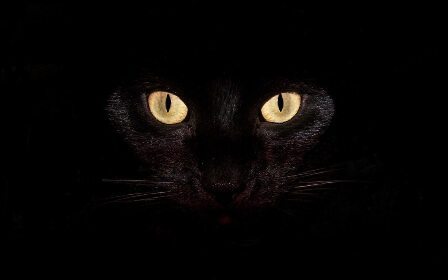
Photo credits
This mythical creature was passed along through stories across generations in southern France, and is basically a spirit in animal form. Among its favourite forms include black cat, dog, cow, fox or even rat.
While considered to be evil, other accounts say that matagots or mandagots can be actually helpful and could even bring wealth to a home if it is well-fed (especially with fresh and plump chicken). There are plenty of versions on How To Care for Your Matagot, but the bottomline is, if you get something out of it, expect to give something in return, too. He’s all about quid pro quo.
7. Loups garous/varous
Scare Factor: ★★
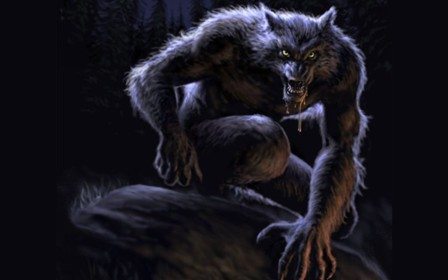
Photo credits
By now werewolves have probably lost their appeal to you, with all the new breeds of werewolves popping up on TV and literature. I mean, werewolves were scary, like, the first ten times you heard of it, right? But don’t dismiss werewolves just yet because you have yet to meet…. the French werewolves!
Aside from the likelihood that the French loups-garous probably have French names such as Antoine, Guillaume or Benoît in their human forms, there are also other major differences from how the other western cultures portray werewolves. For one, the loups-garous do not have to wait until the full moon to transform into wolves… they can do so at will. So that’s some major shape-shifting abilities, eh?
The loups-garous are also fully aware of what transpires when they’re in wolf form, so they don’t turn into raving wild beasts. They retain their intelligence but their senses and abilities are enhanced---making them so much more difficult to destroy than the average werewolves.
8. Peluda
Scare Factor: ★★★

The Peluda literally means “hairy or shaggy beast” and is sometimes referred to as La Velue which is French for hairy. The Peluda, like the Tarasque, is also a mix-and-match assortment of beast parts that all come together to produce one hell of a monster mix.
Pop quiz!
Question: Which animal parts does the Peluda have:
- Porcupine stingers
- Snake’s head and neck
- Tortoise feet
- Serpent tail
- All of the above
Answer: E! All of the above.
The result of all these mixed and matched body parts give an overall look of a stinger-tipped green-colored dragon, which was said to have terrorized La Ferté-Bernard, France during medieval times.
Its super abilities include a breath that could wither crops, quills that could be fired like arrows, and overall invulnerability except for its tail (and in some reports, its neck). With its colossal size, it could also create floods by simply stepping on rivers, inflict lethal strikes with its tail, and even spit out a stream of acid. In short, it’s basically an all-in-one military superweapon-slash-strike team.
Did you know?
According to French folklore, the Peluda was not among the animals who were saved inside Noah’s Ark. But it still survived the Great Flood by hiding in a cave. Afterwards, it went on in a fit of rampage across the countryside, killing everything on its path.
9. Feu follet
Scare Factor: ★
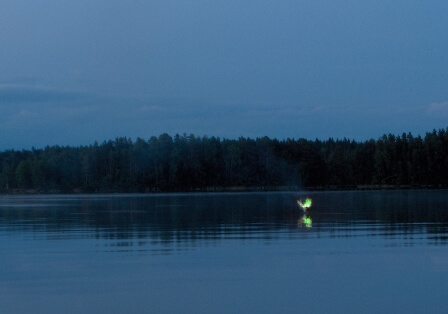
You have most likely heard of this by the names will-o’-the-wisp or jack-o-lantern, but the French call it feu follet.
The feu follet is some sort of atmospheric ghost light which appears in shades of faint bluish glow or sometimes even yellowish, reddish, or greenish. It appears suspended in air, sometimes flickering and often appears just briefly at night above cemeteries, swamps, or bogs. Aside from its ghostly light, feu follet are generally harmless. But beware, as these wisps are said to be spirits of the dead or supernatural beings which, when followed, will lead to your death.
10. Cheval Mallet
Scare Factor: ★
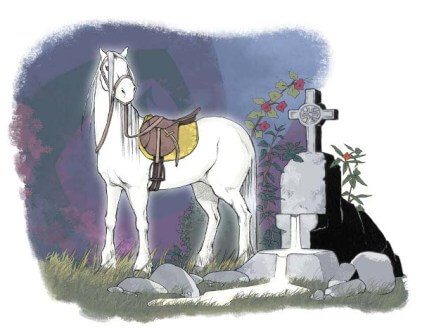
Image credits
Cheval Mallet literally means a Mallet Horse or “evil horse”, and yes, it is indeed evil, but it’s also quite fabulous. This evil but fabulous horse appeared in French folklore specifically around the French areas of Vendée, Poitou, and and Pays de Retz.
The horse’s modus operandi is to appear in the middle of the night and hang out in roads to lure weary travelers. When the exhausted traveler sees the fabulous horse all saddled and bridled, and he decides to take a ride, the poor ill-advised traveler would most likely never to be seen again.
The moral of this legend is simple enough: never ride a strange beautiful horse that you see on the road.
11. Beast of Gévaudan
Scare Factor: ★★★
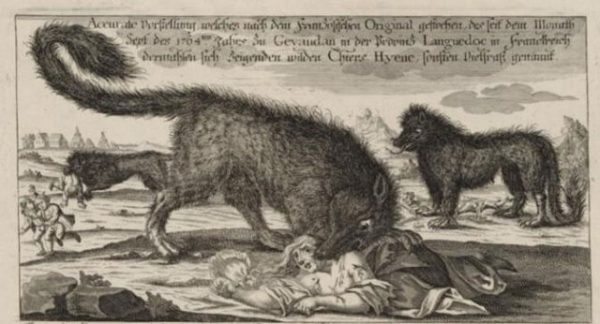
Image credits
You know what earns this beast a 3 star? It’s the scary fact that this was actually recorded in history. That’s right. There was actually a man-eating wolf-dog that wreaked havoc on the former province of Gévaudan or what is presently known as Lozère in Haute-Loire.
Between 1764 and 1767, there were a series of reported attacks by what eyewitnesses described as “beasts with huge teeth and massive tails”. The victims’ throats were torn out and it resulted to over a hundred deaths. Some of the victims were also partly eaten. Yikes. The scare caused by this foul beast led to a royal intervention, with Louis XV--the king himself--sending out his professional hunters to put an end to the killings.
12. Melusine
Scare Factor: ★
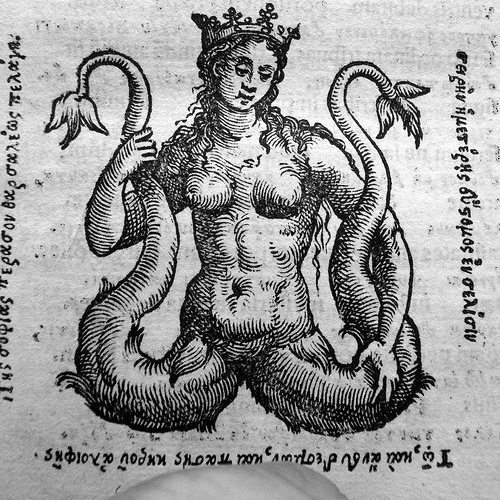
The Melusine is a feminine spirit that seems to resemble a mermaid and she is popular in the folklores of the northern French regions. She lives in rivers and springs and other fresh waters, and is sometimes featured with wings or one or two tails that could either be a serpent’s or a fish tail.
Did you know?
The Melusine is depicted in the logo of the famous coffee brand Starbucks. The new logo has been polished for patrons of all ages, but if you wanna see what the old logo looks like, check it out here.
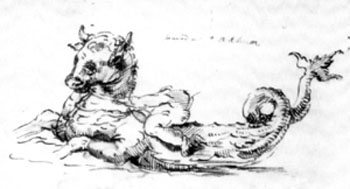
Wikimedia
Quinotaur is a latin word which means “bull with five horns”, but it is actually a mythical sea creature which first appeared in the Chronicles of Fredegar, a 7th century record written in Burgundy. In the chronicle, the quinotaur is said to have sired the line of Merovingian kings when it attacked the wife of a Frankish king.
14. Guivre
Scare Factor: ★★
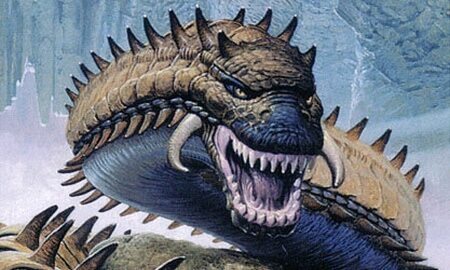
Another dragon-serpent type of monster, this creature has the head of a dragon and a venom breath. It is said to have wandered the Medieval French countryside. They liked to live near damp places such as forests, lakes, and small natural pools. The Guivre is somewhat similar to wyverns.
Did you know?
The Guivre is said to be scared and quite uncomfortable with naked humans. Despite being very aggressive creatures, they blush and look away when there are nude people around. So remember, when you fight a Guivre – it’s naked time!
15. Gargouille
Scare Factor: ★★

This legendary water-spouting dragon with four legs and bat-like wings is said to have terrorized the Seine River. But Saint Romain, the archbishop of Rouen saved the day by taming the gargouille through the sign of the cross. The monster’s neck and head was then mounted on the town’s cathedral as a way of displaying God’s power. Later on, the creature began to be carved in buildings as drainage (because gargouilles spout water, too), and eventually, it became the modern gargoyle in architecture.
BONUS CREATURES: Chicheface and Bigorne

Now I'm pretty sure you haven't heard of these two ever before. The Chicheface is a long creature that looks some sort of like an emaciated werewolf. It is super thin; barely skin and bones, with claws in its feet.
Its counterpart, the Bigorne, is a bloated creature with a human-like face, scales on its back, a smooth belly, clawed forepaws, webbed hindpaws, and tufted tail. It has some similarities with a Tarasque in the looks department, but it's a different creature all on its own.
Now the thing about these two is the satire behind. It is said that the Chicheface is thin because it feeds on submissive wives. The Bigorne, on the other hand, is massive because it feeds on husbands who are obedient to their wives. So since there are quite a few wives who submit to their husbands, the Chicheface lack food and thus became thin, and the Bigorne became fat because of plenty of food to find.
It sure tells you some fascinating insights, doesn't it?
Conclusion
So there you go, 15 mythical creatures from France. Which one is your favorite? If there’s more creature from French folklore or French mythology that we missed in this article, please don’t hesitate to leave a message.
For related articles, you can also check out:
Want more French culture articles? Check out the culture section of this blog. Also, never miss an article when you sign up to the weekly Talk in French newsletter. Plus, get a free gift when you subscribe!
SIGN UP BELOW...
AND GET INSTANT ACCESS TO THE FREEBIES



Just to be clear, this actually happened in history? I’m still quite confused about that.
Of course not, just legends and myths here.
rassure toi a part pour le chien loup le reste ne sont que des mythes
le plus dangereux aujourd’hui ce sont nos hommes politique XD
Hahaha c’est pas faux.
Wow i’m doing this for school still gave me a few shakes
im scared also shoutout to stella in 6th period french
Bonjour. Just kidding. But this was vary cool and nice to know my familys heritage. Thanks!
This guy on YouTube has copied your article verbatim. https://www.youtube.com/watch?v=OC3y_kKEkNc
Indeed…